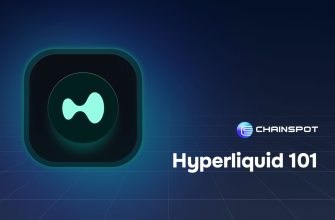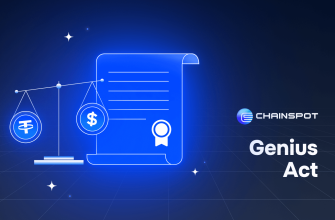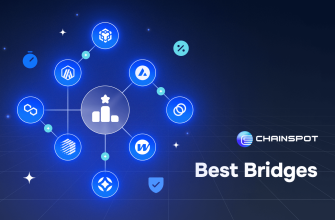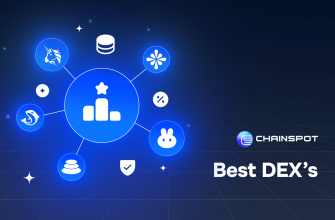Decentralized finance (DeFi) continues to evolve, introducing new concepts and mechanisms to enhance user experience and financial opportunities. One such innovation is restaking, a process that allows users to compound their staking rewards by staking their earned tokens again.
This article delves into the concept of restaking, its benefits, applications, and notable platforms involved in this practice.
What is Restaking?
Restaking refers to the process of taking the rewards earned from staking an asset and staking those rewards again to earn additional returns. This creates a compounding effect, significantly increasing the overall yield for the staker.
In traditional staking, users lock up their tokens in a blockchain network to support its operations, such as validating transactions and securing the network, in return for rewards.
Restaking extends this process by putting the earned rewards to work again, maximizing the earning potential.
Benefits of Restaking
Restaking offers several benefits to users in the DeFi ecosystem:
- Compound Returns: By continuously staking earned rewards, users can achieve higher overall returns compared to simply holding or periodically unstaking their assets. The compounding effect can lead to exponential growth in rewards over time.
- Increased Network Security: As more tokens are continuously staked and restaked, the security and decentralization of the blockchain network are enhanced. This contributes to a more robust and resilient network.
- Enhanced Liquidity Utilization: Restaking ensures that assets remain actively utilized within the network, rather than sitting idle. This active participation can lead to more efficient use of liquidity and better overall network performance.
- User Engagement and Retention: For DeFi platforms, encouraging restaking can enhance user engagement and retention. Users who restake are more likely to remain active participants in the network, contributing to its growth and stability.
Key Players in Restaking
Several platforms and projects are at the forefront of implementing restaking mechanisms. Here are some notable examples:
- EigenLayer: With a TVL exceeding $1.5 billion, EigenLayer is an innovative protocol built on the Ethereum blockchain, designed to enhance cryptoeconomic security through restaking. It allows Ethereum stakers to extend their staked ETH or LSTs beyond Ethereum to secure additional applications on the network.
By opting into EigenLayer smart contracts, stakers can earn extra rewards by providing pooled security to various services. This mechanism not only augments the security of those services but also increases capital efficiency for stakers. EigenLayer’s approach offers bolstered protocol security, flexibility for developers, and enhanced capital efficiency.
However, potential risks such as slashing, centralization, and yield risks must be considered.
EigenLayer’s EigenDA project also significantly reduces gas fees on Ethereum Layer 2 solutions by providing a decentralized data availability layer secured by Ethereum. - Etherfi: Etherfi (ETHFI) is the largest liquid restaking protocol in the market, with a TVL of over $2.8 billion. It leverages Ethereum’s proof-of-stake blockchain to enhance security across other networks and protocols.
Etherfi allows users to stake ETH and receive eETH, a native liquid restaking token on Ethereum. By partnering with EigenLayer, Etherfi enables ETH stakers to validate various Ethereum-based software modules, promoting a more decentralized and secure network infrastructure.
Etherfi’s success is underscored by a $23 million Series A funding round led by Bullish Capital and CoinFund. This financial backing highlights strong market confidence in Etherfi’s liquid restaking solution. - Pendle: Pendle operates as a pioneering protocol within DeFi, focusing on the tokenization and trading of yield. It enables users to tokenize yield-bearing assets, dividing them into Principal Tokens (PT) and Yield Tokens (YT), which can be traded independently.
Pendle’s AMM facilitates efficient trading of PTs and YTs, enhancing capital efficiency and minimizing impermanent loss. Pendle has capitalized on the speculative frenzy surrounding the EigenLayer airdrop, demonstrating its capability to adapt to market dynamics.
This surge in activity has resulted in a significant increase in deposits of eETH and a remarkable surge in Pendle’s native token value. - Puffer Finance: Puffer Finance is a significant player in the liquid restaking domain, designed as a native liquid restaking protocol (nLRP) that capitalizes on the EigenLayer framework. It offers a default module for PoS validation and plans to introduce new restaking modules managed by its governance system.
Stakers can deposit ETH and receive pufETH, an LST embodying PoS and restaking rewards. Puffer Finance locked $850 million in TVL shortly after its launch, becoming the second-largest liquid staking protocol on Ethereum.
Backed by Binance Labs and with a TVL of over $1.26 billion, Puffer Finance showcases its potential to reshape the liquid staking landscape on Ethereum. - Renzo Protocol: With a TVL of over $1 billion, Renzo Protocol operates as a Liquid Restaking Token (LRT) and Strategy Manager for EigenLayer. It streamlines the restaking process, enabling collaboration between users and EigenLayer node operators.
Renzo raised $3.2 million in a seed funding round to further develop its liquid restaking protocol on EigenLayer. Renzo’s future plans include implementing a DAO to oversee operations and strategy and introducing ezETH, a restaked ETH position token integrated with DeFi to generate rewards in various currencies.
Renzo has already attracted over 2,000 users, signaling its potential to become a significant player in Ethereum restaking.
Challenges and Future Prospects of Restaking
Restaking offers numerous benefits, but it also presents certain challenges and considerations. One of the primary concerns is the inherent risks associated with smart contracts. Restaking relies heavily on smart contracts, which can be vulnerable to bugs and exploits.
Ensuring robust security measures and thorough audits is essential to mitigate these risks. Additionally, the value of staked tokens and rewards can be affected by market volatility, so users need to be aware of potential price fluctuations and their impact on returns. Regulatory concerns also play a significant role in the evolving landscape of DeFi. As restaking gains popularity, compliance with regulations while preserving decentralization poses an ongoing challenge.
Looking ahead, the future of restaking in DeFi appears promising. Continued innovation, improved security, and enhanced user experience will drive its adoption. As more users recognize the benefits of compounding their staking rewards, restaking is likely to become a cornerstone of DeFi strategies.
The potential for restaking to enhance the efficiency and profitability of DeFi is undeniable, making it a critical component of the future decentralized financial landscape.
Conclusion
Restaking is transforming the way users maximize their returns in the DeFi space. By allowing users to compound their staking rewards, it unlocks new opportunities for yield optimization and network security. Notable projects like EigenLayer, Etherfi, Pendle, Puffer Finance, and Renzo Protocol are leading the way in implementing restaking mechanisms. Despite challenges, the potential for restaking to enhance the efficiency and profitability of DeFi is undeniable, making it a critical component of the future decentralized financial landscape.












